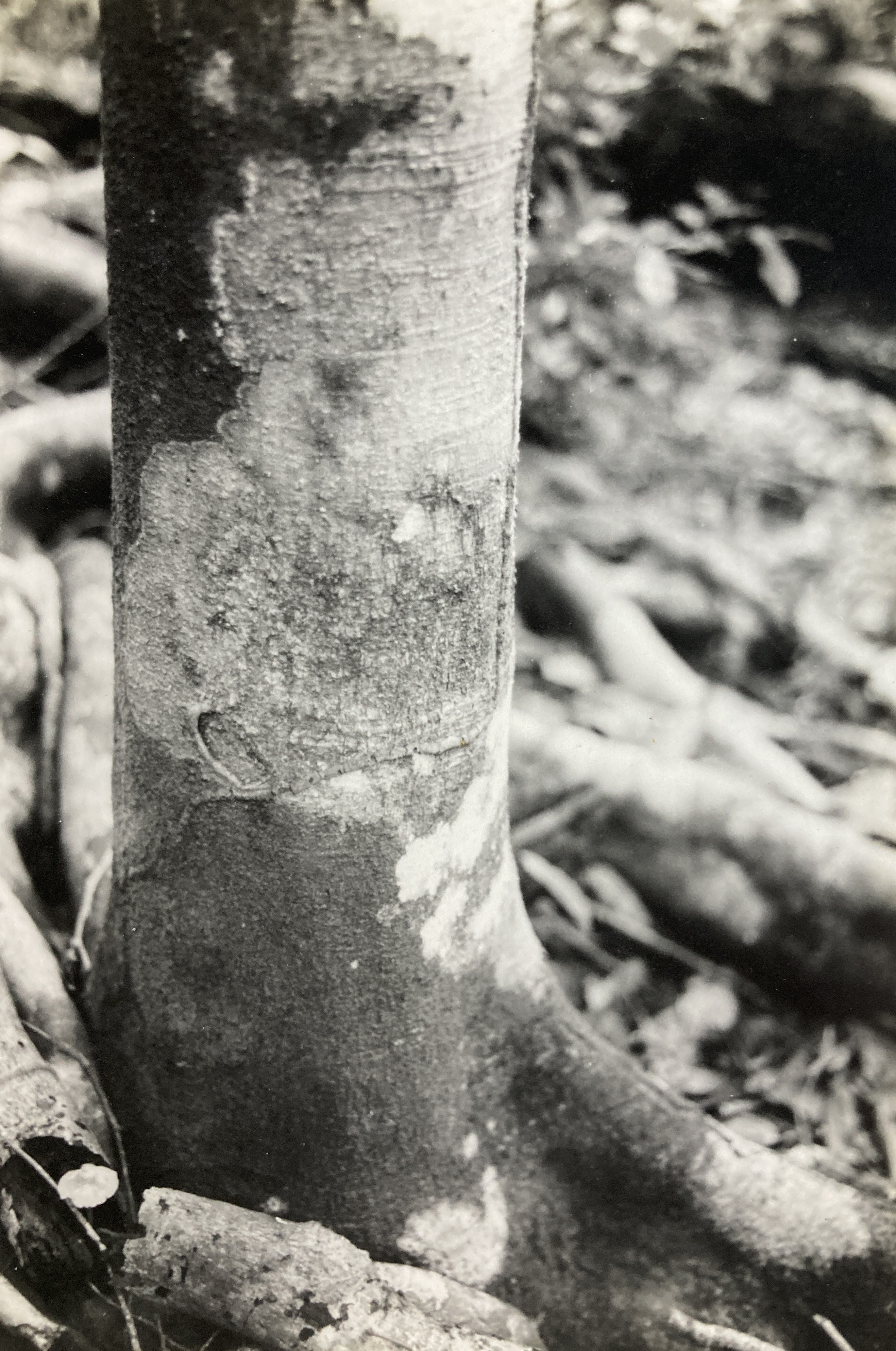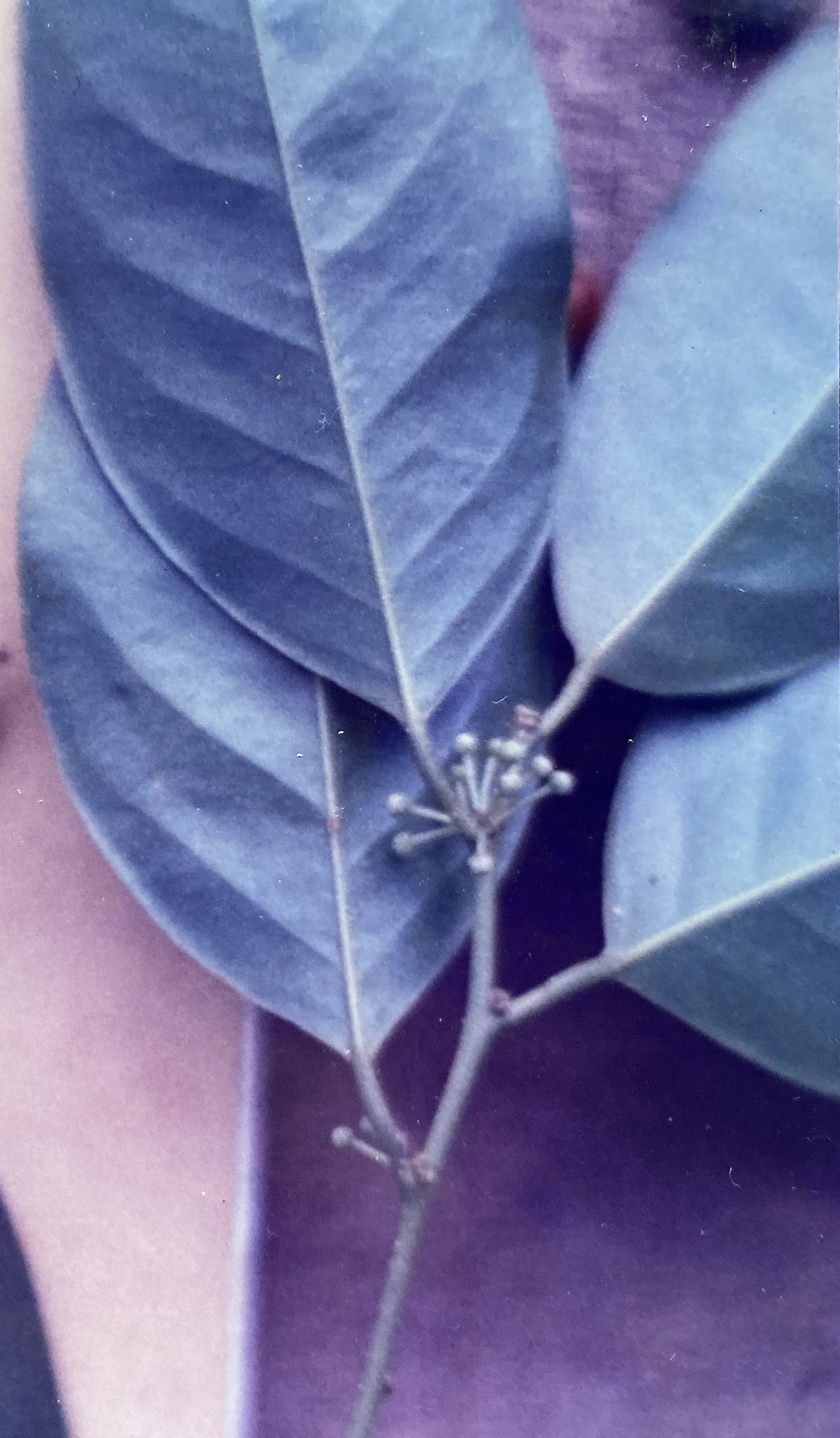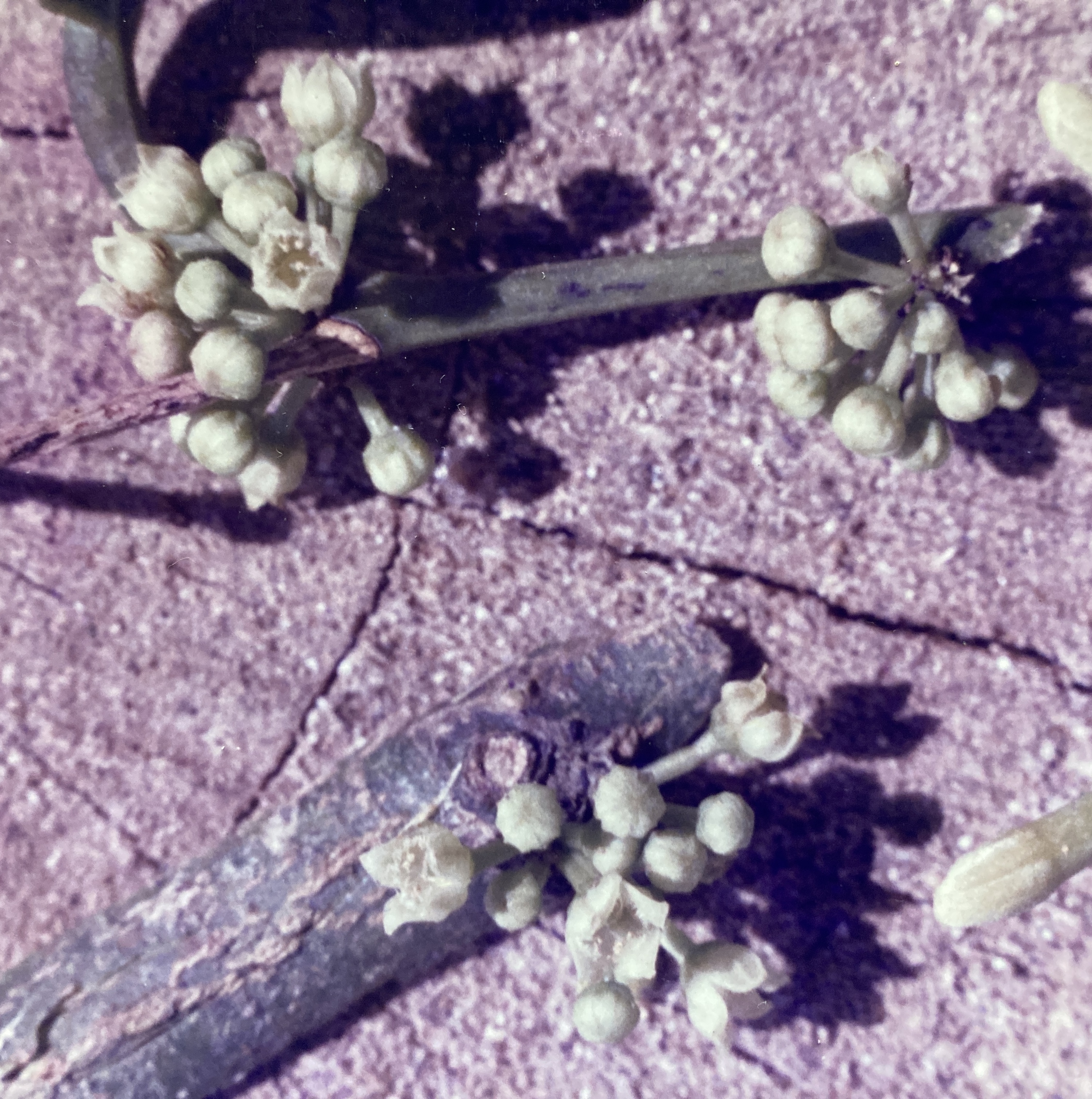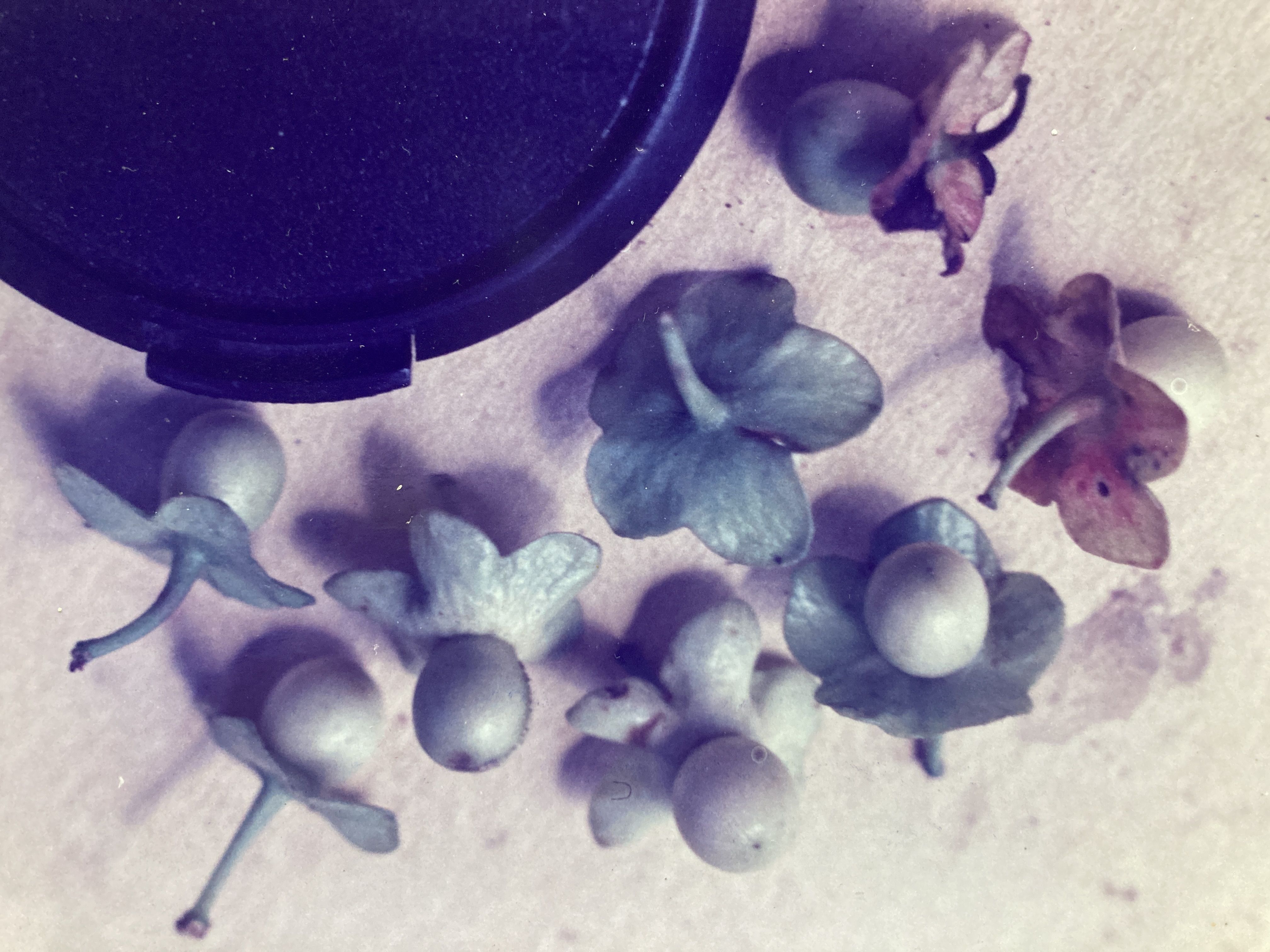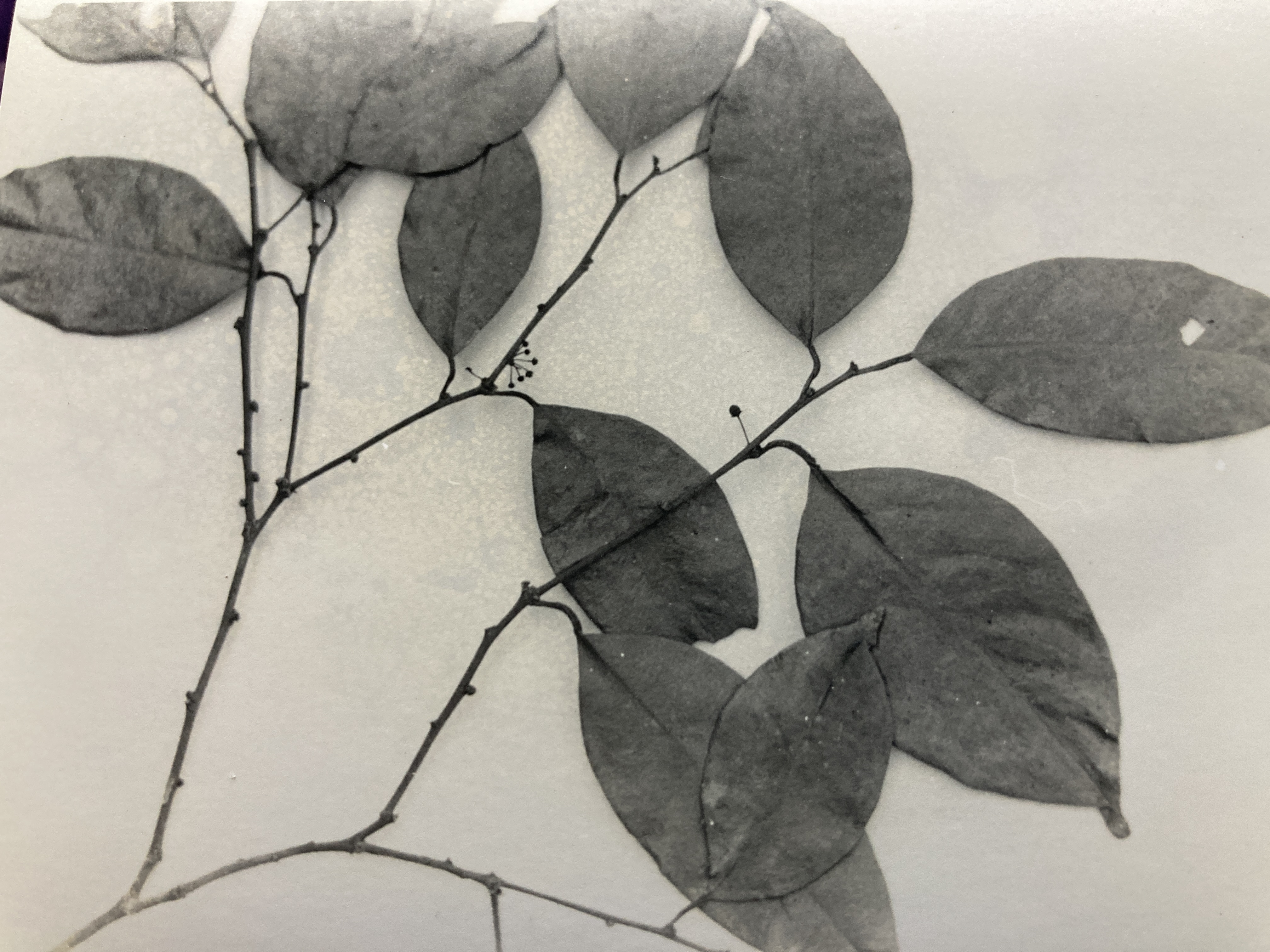Heisteria concinna Standley
Olacaceae
NARANJILLO, AJILLITO
Common understory evergreen tree (10-15 m) distributed uniformly throughout all of Manuel Antonio’s primary forest habitats with the exception of the sandy coastline. Among the more noteworthy characteristics of this species are the abundant pink and green fruits that adorn the dark Heisteria canopy at various times during the year. Otherwise an inconspicuous tree, Heisteria occupies a crowded niche within the shaded and obscure tropical forest interior.
Description: Heisteria has a straight, cylindrical, buttressless trunk that rarely exceeds 20 cm in diameter. Clad in mostly smooth, dark brown bark, the bole sprouts branches along the upper third of its length. These limbs are generally long, flexible, and thin – and they often sag under the burden of their own weight. Prominent leaf scars, present on the branches and twigs, possess small, woolly, fibrous growths (from which flowers periodically emerge). These swellings cause small Heisteria limbs to appear noded and angular – a unique and characteristic feature that is extremely useful in the identification of this species. Together, the loose association of limbs generates a rounded crown of moderate density.
The thick and leathery leaves are simple and alternately arranged. Of extremely variable size, they range from 7-12 cm in length, and 3.5-6 cm in width (averaging 9.5 by 4.5 cm). The widely elliptical blades are terminated proximally by minute drip tips (0.5 cm) and proximally by dorsally grooved and sometimes swollen petioles (1 cm). (These latter structures are often colored black, contrasting strongly with the brown hue that dominates the surrounding twigs.) New foliage may occur more than once and at any time during the year. As is the case with the fresh leaves from so many other trees, recently expanded Heisteria foliage is eye-catching, thanks to its pale, translucent-green color.
Forming compact clusters, flowers (3 mm by 1 cm) grow from the fibrous tufts located in old leaf scars (along the bare portions of the twig) as well as in the axils of current leaves. Each green blossom consists of five minute sepals; five green, pointed, and outwardly-curving (even sculpted) petals; a single short, green pistil; and a 6 mm pedestal. About ten tiny stamens are found attached to the petals and are bent towards the pistil. Sweetly fragrant of carnations, Heisteria blossoms are sometimes sufficiently odorous to be detectable from the ground beneath the trees that bear them. Flowering periods are short (generally lasting for only two weeks), well synchronized, and annually occurring – but their timing is irregular. Blossoms have been observed in January, March, June, September-October, and November, but are probably most abundantly and consistently produced in the June and September-October events.
Small fruits (1 cm) grow rapidly, reaching maturity only two months after flowering ceases. Each pale green (or off-white), spherical drupe is dominated by a flat, 5-lobed apron. Attached proximally, this collar-like structure turns from green to pink upon ripening, eventually becoming a deep purplish-red color. Even after the drupes have been harvested, these brightly colored aprons persist in the trees, providing a startling though welcome splash of color amid the monotonous and dull forest greens of the foliated branches. Inside the drupe, a thin layer of flesh conceals a single, black, spherical seed. The frequency and timing of Heisteria harvests mimic those of the flowering periods, with ripe fruits in evidence during seemingly erratic and multiple intervals during the year. However, harvests tend to be largest and most consistently generated during January-February and August-September.
Similar Species: The simple-alternate leaf arrangement is by far the most frequently observed configuration to be found in the very-humid tropical forests of south-western Costa Rica. In Manuel Antonio National Park (MANP), Heisteria can be distinguished from the myriad other trees possessing similarly organized leaves by the tufted scars that are found in old leaf axils. These add a unique, noded appearance to the small branches and twigs of this species.
Natural History: Heisteria flowers are pollinated by insects. Understory birds and small mammals are lured to its fruits by the brightly colored aprons that adorn them.
Distribution: In MANP, Heisteria is found in all non-coastal, primary forests habitats – but is especially abundant on the better drained soils of hills and ridges. It ranges from Costa Rica to Panama.

